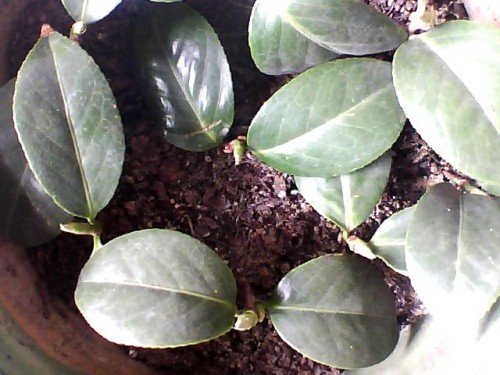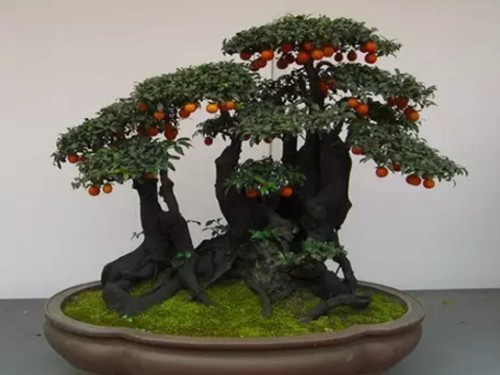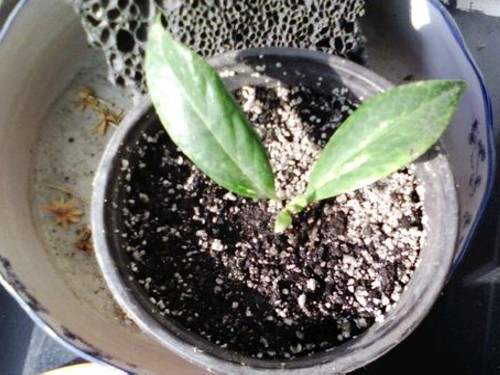Cutting methods of potted camellias
Camellia is a warm area tree species, mostly born in the shade edge, shade-tolerant, like warmth, the temperature is too low or too high is not suitable. Especially for the strict requirements of soil quality, suitable for acidic soil, the PH value is in the range of 5.0Mel 6.5. It can grow healthily on loose fertile sandy soil or pine soil (a kind of mountain mud), and it is mostly potted in the north. Although camellia can be propagated by sowing, it is often used as a culture rootstock because of its great variation, so the more commonly used propagation method is cutting.
Camellia is one of the top ten traditional famous flowers in China. It likes warm environment and suitable temperature for growth is 18-25 degrees. It likes to grow in the environment of semi-shade and high air humidity and in deep summer, fertile, loose and well-drained soil. In Jiangsu and Zhejiang, the best time for cutting propagation of camellia is about the middle of June. When cutting and propagating camellias, you can generally follow the following steps.

[cutting time]
The cutting time of camellia is mostly in late spring and summer. Most of the cuttings are cut indoors in Beijing from April to May, keeping the temperature at 25 ℃ and more than 90% of our relative humidity, while cutting is usually carried out in Shanghai from May to June.
[Matrix preparation]
The cutting substrate is required to have the characteristics of heat preservation, moisturizing, loosening and breathing. generally, sandy soil or soil rich in humus can be used as cutting substrate, and loess without impurities and argillaceous can also be used when the conditions do not allow or mass propagation. About a week before cutting, the cutting substrate should be exposed to the sun or disinfected with potassium permanganate solution. Wait until 1-2 days before cutting, and then wet the cutting substrate with water.
[cuttage collection]
For multi-purpose young mother trees, one-year-old twigs were selected from the top, which were about 10cm long, 3 leaves were removed from the lower part, and the cuttings were flattened or cut into horseshoe shape with a sharp blade under the node, and the top buds and lateral buds were left, and the cuttings were treated with auxin. Soak the base of the cuttings in naphthalene acetic acid or indole butyric acid of 200-500ppm concentration before cutting. Cuttings can also be treated with vitamins. Dip the base of the cuttings in the vitamin B12 injection solution before cutting. after taking it out, make the liquid absorb into the cuttings for about 1 Mel for 2 minutes, and then carry on the cutting.
[cuttage treatment]
As cuttings, the young branches take root more easily than the old ones, and the semi-lignified shoots take root more easily than the completely lignified old branches. therefore, from the camellia mother plants with good quality, stable characters, strong growth, disease-free and short age, the fully developed semi-lignified branches of the same year should be selected as cuttings and cut into cuttings 8-10 cm long, keeping the upper two leaves. The rest of the leaves are cut from the base of the petiole, the upper end of the cuttings is cut flat at about 0.5-1 cm from the bud, and the lower end is cut obliquely near the internodes.
[cutting method]
When cutting, we should follow the principle of cutting along with picking, and insert the treated cuttings into the wet substrate (usually about 3 cm, which can be cut deeper in arid areas). In order to avoid damage to the cortex at the base of the cuttings, you can first punch holes with a stick thicker than the branches, then insert the cuttings, and then gently compact the soil with your fingers to make the soil in close contact with the cuttings. The suitable cutting density is slight overlap of leaves.
[management after insertion]
The soil managed and used is the same as sand bed cutting. if it is sealed with plastic bags, the number of water spraying can be reduced. The temperature is kept at 25 ℃ and the relative humidity is above 90%. It can take root after 3 months. The four factors affecting the rooting of cuttings are humidity, temperature, air and light.
Immediately after cutting, the seedbed should be watered once, and a bow shed should be set up and covered with plastic film to keep the air humidity at about 95% and the temperature at 18-27 degrees. At the beginning, the seedbed should be shaded, and the degree of shading should be a little bigger. in case of high temperature, it can be cooled by foliar spray or spray in the air. After 15-20 days, the healing tissue begins to produce, at this time, the amount of water can be gradually reduced and the humidity can be maintained by about 85%. About 20 days after the formation of healing tissue, it began to take root, and after that, the amount of irrigation could be further reduced to keep the soil moist. In the case of avoiding direct strong light, gradually increase the light time, so that the seedlings for photosynthesis, but also can properly lift both ends of the film to make it ventilated.
The cutting density of camellia in the seedling bed depends on the variety and the size of leaves, which requires that the leaves do not overlap with each other after cutting. generally, the plant spacing is 4cm 5 cm, the row spacing is about 10 cm, and it is inserted into the bed soil about 3 cm. Shallow cutting is beneficial to rooting.
Spray water and shade in time after cutting to prevent direct sunlight. Keep the temperature at 25: 30 ℃ and relative humidity at 85: 95%. Therefore, when cutting camellias, more plastic sheds are used for heat preservation and moisturizing, and sunshade nets or curtains are covered on the roof, and water is sprayed to cool down.
When cutting 30-40 days (not treated), or 15-20 days (treated by plant growth hormone), cutting to grow new roots, it is necessary to gradually reduce shading, increase light, until the plastic film is removed, enter normal cultivation at seedling stage, strengthen fertilizer and water management, loosen soil and weed, so that camellia cuttings have a good living environment.
It can be divided into two cultivation methods: ground cultivation and pot cultivation. If it is cultivated in landscaping, it needs to be accompanied by shade trees. Pot with deep tile pot is better, basin soil is loose, fertile, easy to permeate is better. The seedlings change their pots every 2-3 years. Fertilization should be mastered in three key periods, that is, nitrogen fertilizer should be applied mainly from February to March. Thinning buds should be carried out if the buds are too dense, and it is appropriate to keep 1 or 2 buds per branch. The frequency of watering depends on the climate, based on the principle of keeping the soil moist. Pot plants in the north should be placed in cold rooms with good light and ventilation in winter, and moved out in summer and placed in outdoor shade sheds or treetops.
Time: 2019-06-10 Click:
- Prev

Modeling Technology of Fruit Tree Bonsai
Bonsai fruit trees have both shape and fruit, brilliant characteristics, ornamental value all the year round, exquisite flowers in spring, luxuriant branches and leaves in summer, plenty of fruit in autumn, vigorous in winter, full of interest in life. The bonsai of fruit trees should have a certain shape and artistic conception. According to the species and variety characteristics of fruit trees
- Next

Cutting Propagation technique of Camellia
Cutting is a method of flower reproduction, and it is also the simplest way to propagate plants that are most suitable for flower friends to operate at home. Today, I would like to introduce to you the plants that can survive with a single branch, and the branch insertion method will make you become a plant expert! Camellia is very convenient to manage as long as the temperature is right.
Related
- Fuxing push coffee new agricultural production and marketing class: lack of small-scale processing plants
- Jujube rice field leisure farm deep ploughing Yilan for five years to create a space for organic food and play
- Nongyu Farm-A trial of organic papaya for brave women with advanced technology
- Four points for attention in the prevention and control of diseases and insect pests of edible fungi
- How to add nutrient solution to Edible Fungi
- Is there any good way to control edible fungus mites?
- Open Inoculation Technology of Edible Fungi
- Is there any clever way to use fertilizer for edible fungus in winter?
- What agents are used to kill the pathogens of edible fungi in the mushroom shed?
- Rapid drying of Edible Fungi

